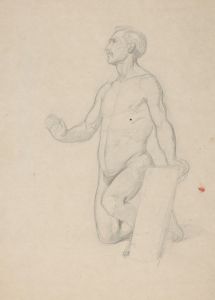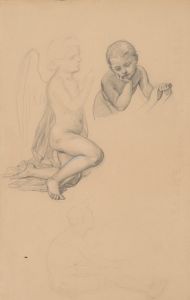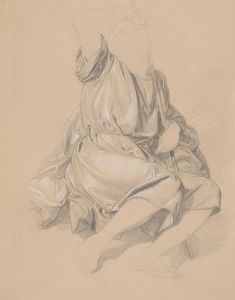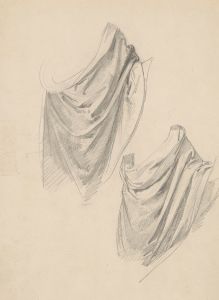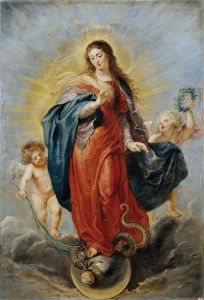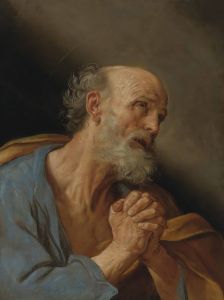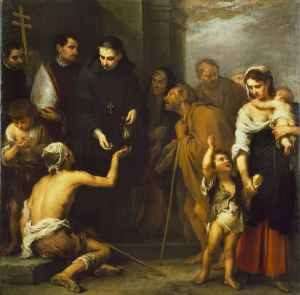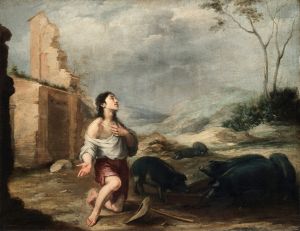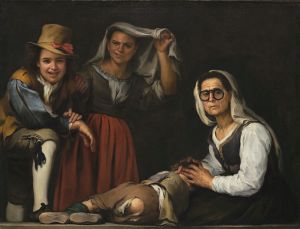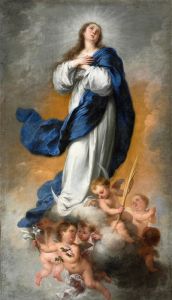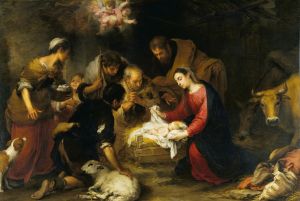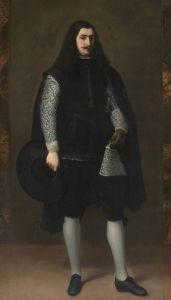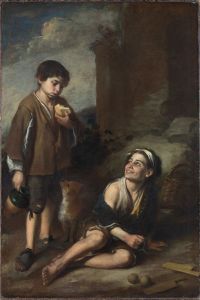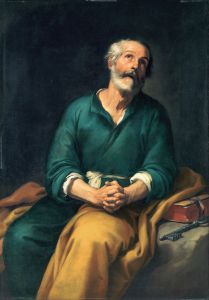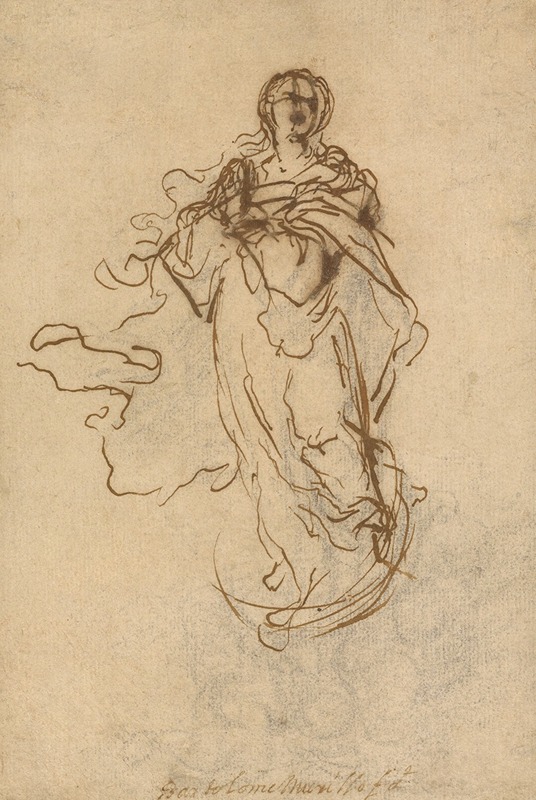
The Immaculate Conception
A hand-painted replica of Bartolomé Estebán Murillo’s masterpiece The Immaculate Conception, meticulously crafted by professional artists to capture the true essence of the original. Each piece is created with museum-quality canvas and rare mineral pigments, carefully painted by experienced artists with delicate brushstrokes and rich, layered colors to perfectly recreate the texture of the original artwork. Unlike machine-printed reproductions, this hand-painted version brings the painting to life, infused with the artist’s emotions and skill in every stroke. Whether for personal collection or home decoration, it instantly elevates the artistic atmosphere of any space.
Bartolomé Esteban Murillo's "The Immaculate Conception" is a renowned painting that exemplifies the Baroque style and religious fervor of 17th-century Spain. Murillo, born in 1617 in Seville, was one of the most celebrated painters of his time, known for his religious works, genre scenes, and portraits. His depictions of the Immaculate Conception are among his most famous contributions to religious art.
The Immaculate Conception is a doctrine of the Roman Catholic Church that holds that the Virgin Mary was conceived without original sin. This belief was a popular subject in Spanish art during the Counter-Reformation, a period when the Catholic Church sought to reaffirm its doctrines in response to the Protestant Reformation. Murillo's interpretation of this theme is considered one of the most iconic and influential.
Murillo painted several versions of "The Immaculate Conception," but one of the most famous is housed in the Museo del Prado in Madrid. This particular painting, completed around 1678, is often referred to as "The Immaculate Conception of Los Venerables" because it was originally commissioned for the Hospital de los Venerables in Seville. The painting is a large-scale work, measuring approximately 274 cm by 190 cm, and is celebrated for its ethereal beauty and masterful use of color and light.
In this painting, Murillo depicts the Virgin Mary as a young woman, clothed in a flowing white robe and a blue mantle, standing on a crescent moon. She is surrounded by a host of cherubs and angels, who seem to lift her towards the heavens. The background is filled with a soft, golden light, which enhances the sense of divine presence and purity. Murillo's use of soft, blended brushstrokes and delicate color transitions creates a sense of movement and grace, characteristic of his style.
Murillo's "The Immaculate Conception" is notable for its serene and idealized portrayal of the Virgin Mary. Her youthful, serene expression and the gentle, swirling motion of her garments convey a sense of divine grace and purity. The composition is carefully balanced, with the Virgin's figure forming a central axis, flanked by the dynamic arrangement of cherubs and clouds.
The painting reflects Murillo's deep religious conviction and his ability to convey spiritual themes with emotional depth and visual harmony. His work on the Immaculate Conception was highly influential, setting a standard for subsequent depictions of the theme in Spanish art. The painting's popularity and acclaim contributed to Murillo's reputation as one of the leading painters of the Spanish Golden Age.
Today, "The Immaculate Conception" by Bartolomé Esteban Murillo remains a masterpiece of Baroque art, admired for its technical skill, spiritual intensity, and aesthetic beauty. It continues to be a significant attraction at the Museo del Prado, where it draws visitors from around the world who come to appreciate Murillo's artistic genius and his contribution to the rich tradition of religious painting in Spain.





